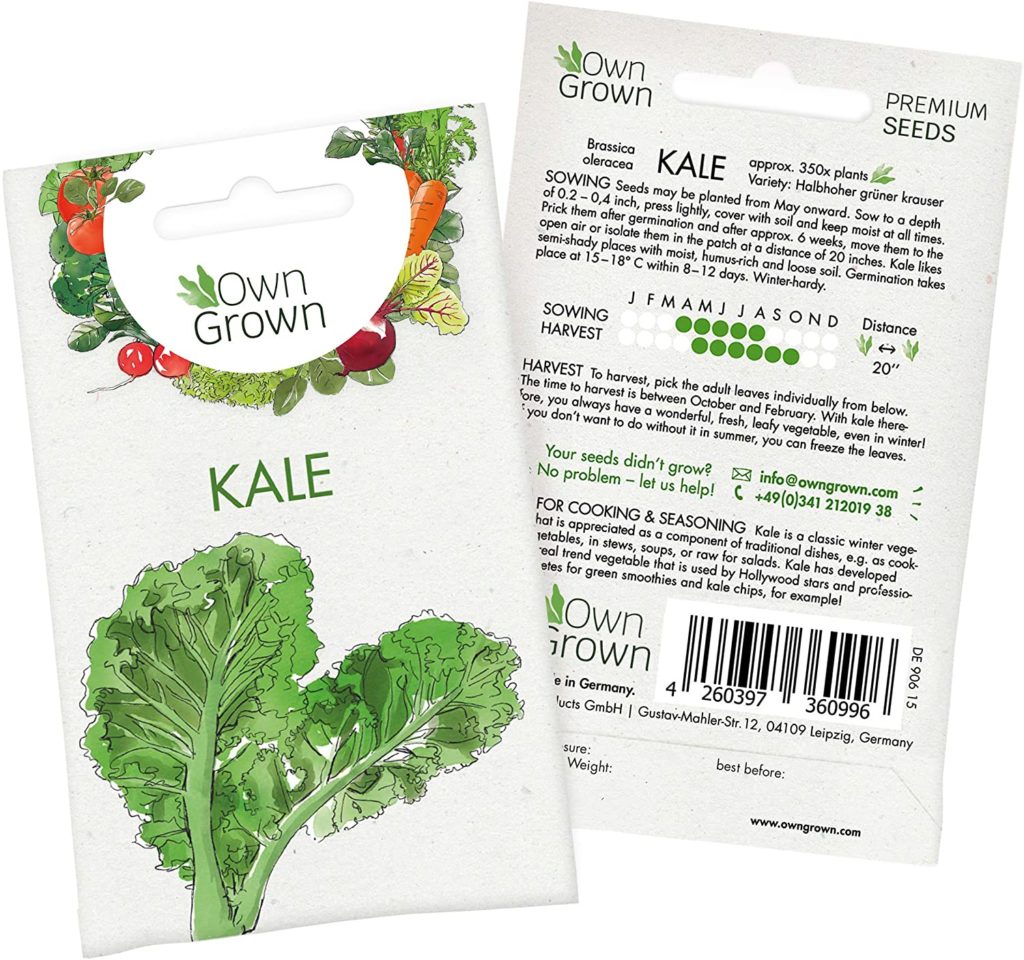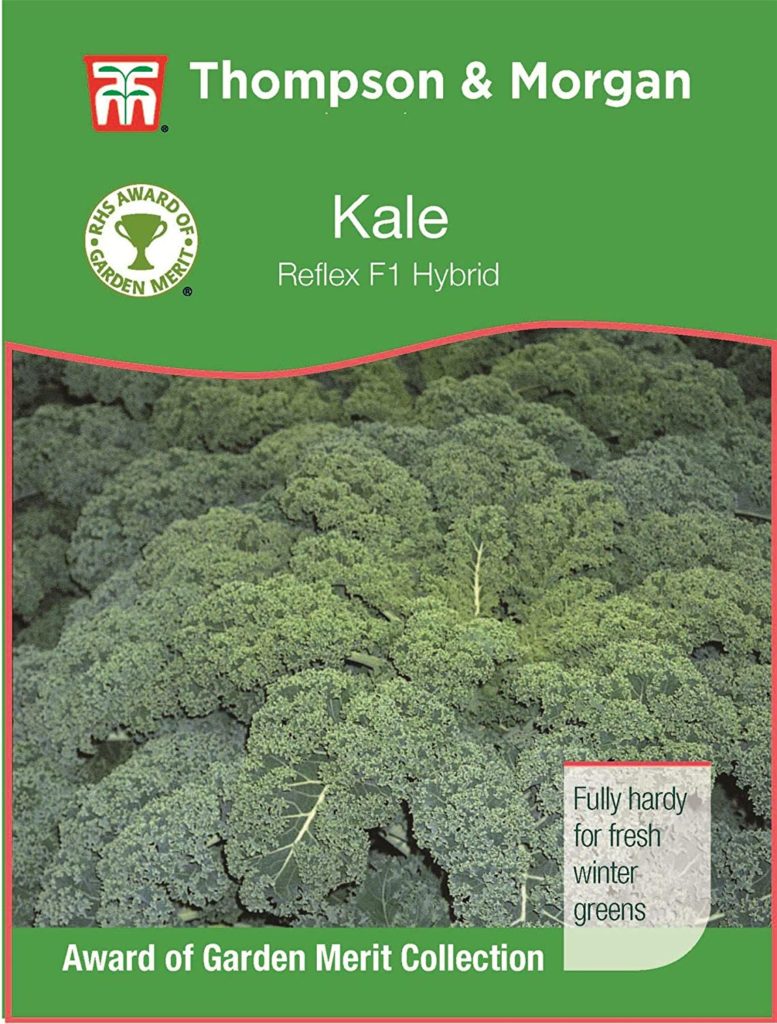Kale is a leafy green crop that is tolerant of a variety of growing conditions, and one that fills the ‘hungry gap’, providing you with tasty, nutritious greens throughout winter and into spring.
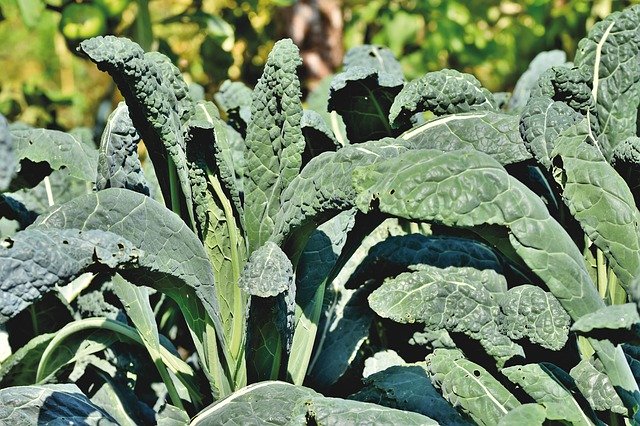
Kale is a brassica, and belong to the same group of plants as cabbages, broccoli, Brussels sprouts and cauliflower. Often sold as a ‘superfood’, it has many health benefits and is rich in nutrients.
Just 2 ounces of kale contains approximately 200% of your RDA of vitamin A and 130% of vitamin C, and we’ve not even mentioned the powerful antioxidants that are in kale.
Growing Kale
Kale is a hardy plant that happily grows in cold temperatures and in many different types of soil, as long as it is fertile and free draining. A sunny position is preferred, although kale will do well in partial shade.
Kale Varieties
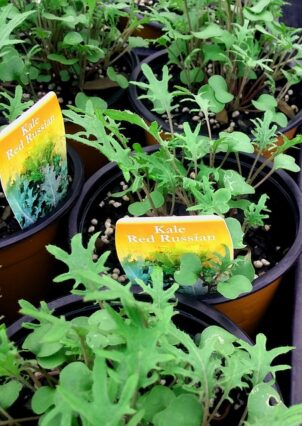
Different varieties of kale are determined by the shape of the leaves. There are curly kale varieties, plain leafed kale varieties, rape kale and Tuscan kale varieties.
See the kale pages at Thompson & Morgan for interesting varieties, like Dwarf Green Curled and Emerald Ice.
Sowing Kale Seeds
Kale seeds can be sown in April, in a seed tray or in modules filled with a good quality seed compost. The benefit of sowing in modules is that you do not need to prick out the seedlings once they begin to grow, and you can plant them outside with minimal root disturbance. Keep them in a place that gets lots of light, keep the compost moist, and the kale plants should be ready to plant outside in June.
Kale seeds can also be sown outside in garden soil. Prepare the soil in advance by digging in some organic matter such as garden compost of well-rotted manure. Rake the soil to a fine tilth. Use a garden cane to make a seed drill that is approximately half an inch deep, and sow kale seeds thinly. Cover with soil and water with a fine rose watering can.
If you have more than one row of kale, space the rows about a foot apart.
Planting Kale Outside
When you plant kale outside, make sure the soil is firm. Like most brassicas, kale does not like loose soil. Space each plant approximately 18 inches apart to allow them to mature without competing for nutrients.
Growing Kale in Pots
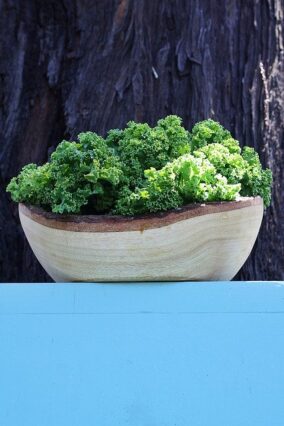
Kale will happily grow in pots and containers, and the shapes of the leaves make them an attractive addition to the garden.
Make sure that the pot you use to grow kale is large enough to allow the plant to fully develop and mature, a pot that is approximately 12 inches across works well.
Add some gravel or pieces of broken pot to the bottom of the container to allow the soil to drain. Keep an eye on the moistness of the soil, as pots will dry out quickly in warm weather.
An advantage of growing kale in pots is that you can move the plant to sunnier or shadier spots in the garden, if needed.
Caring for Kale Plants
Kale is a maintenance free brassica to grow and it has much more resistance to the problems that often affect brassicas, such as Cabbage Root Fly, Cabbage White butterflies, although putting a fine net on a frame over young kale plants will prevent egg laying. Kale is also resistant to the fungal condition of Club Root, where roots swell and stops the plant growing well.
Shelter kale plants if they are being moved by the wind and remove some of the outer leaves if they begin to turn yellow.
Water in dry conditions and remove weeds that grow between the plants.
How to Harvest Kale
One the leaves are large enough to be worthwhile eating, they can be picked. Do not harvest all of the kale leaves from the plant, as this will stop it from growing. The central leaves should also be left.
Harvest kale leaves that are on the outside of the plant. Smaller leaves are better, as large kale leaves can be tough, although are fine if cooked.
Kale leaves are easily stored for a few days in a fridge, or they can be picked and frozen raw. Kale leaves that have been frozen do not have the texture of fresh leaves, so are good in cooked dishes.
Here are some kale seeds available on Amazon.

